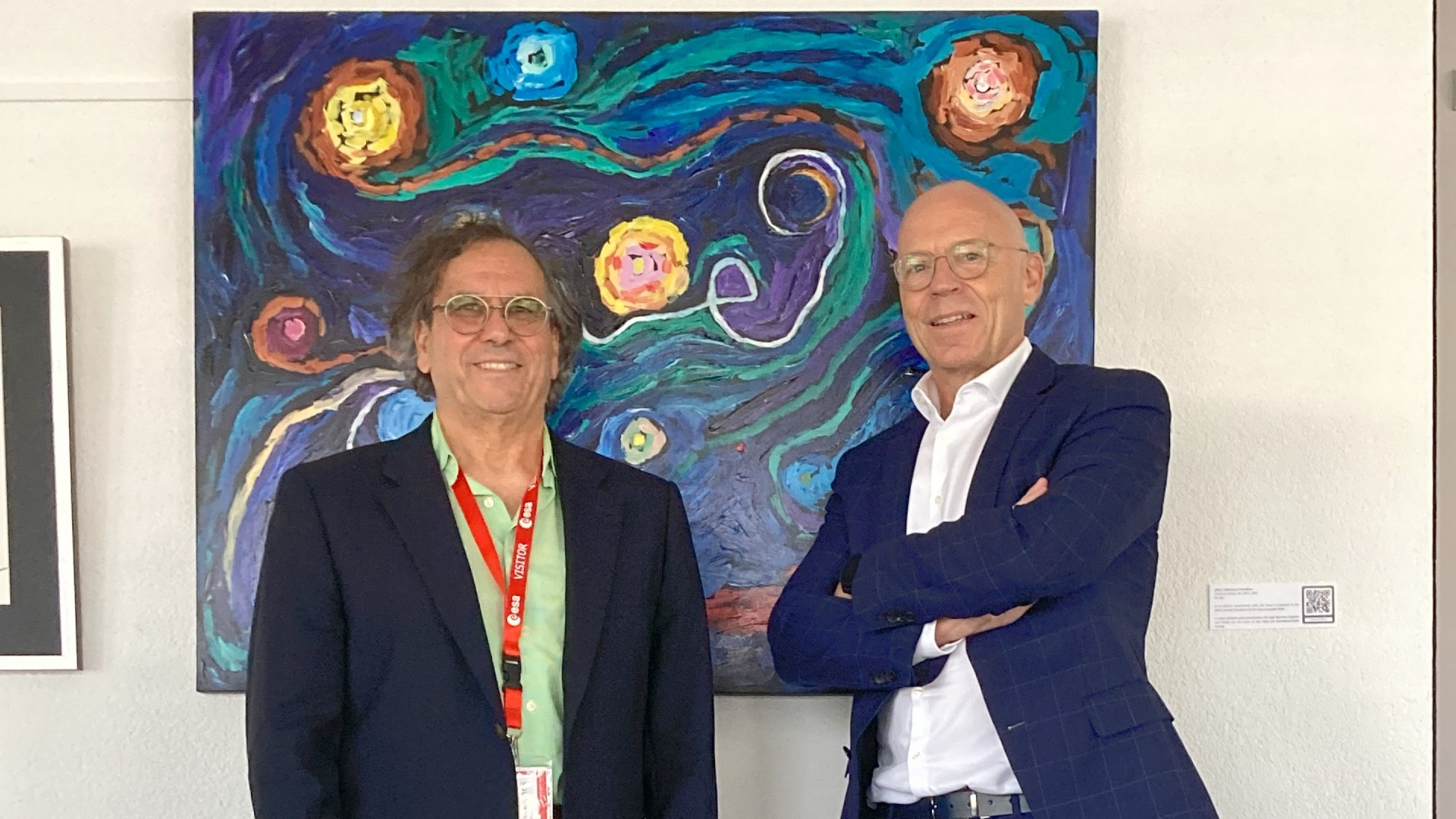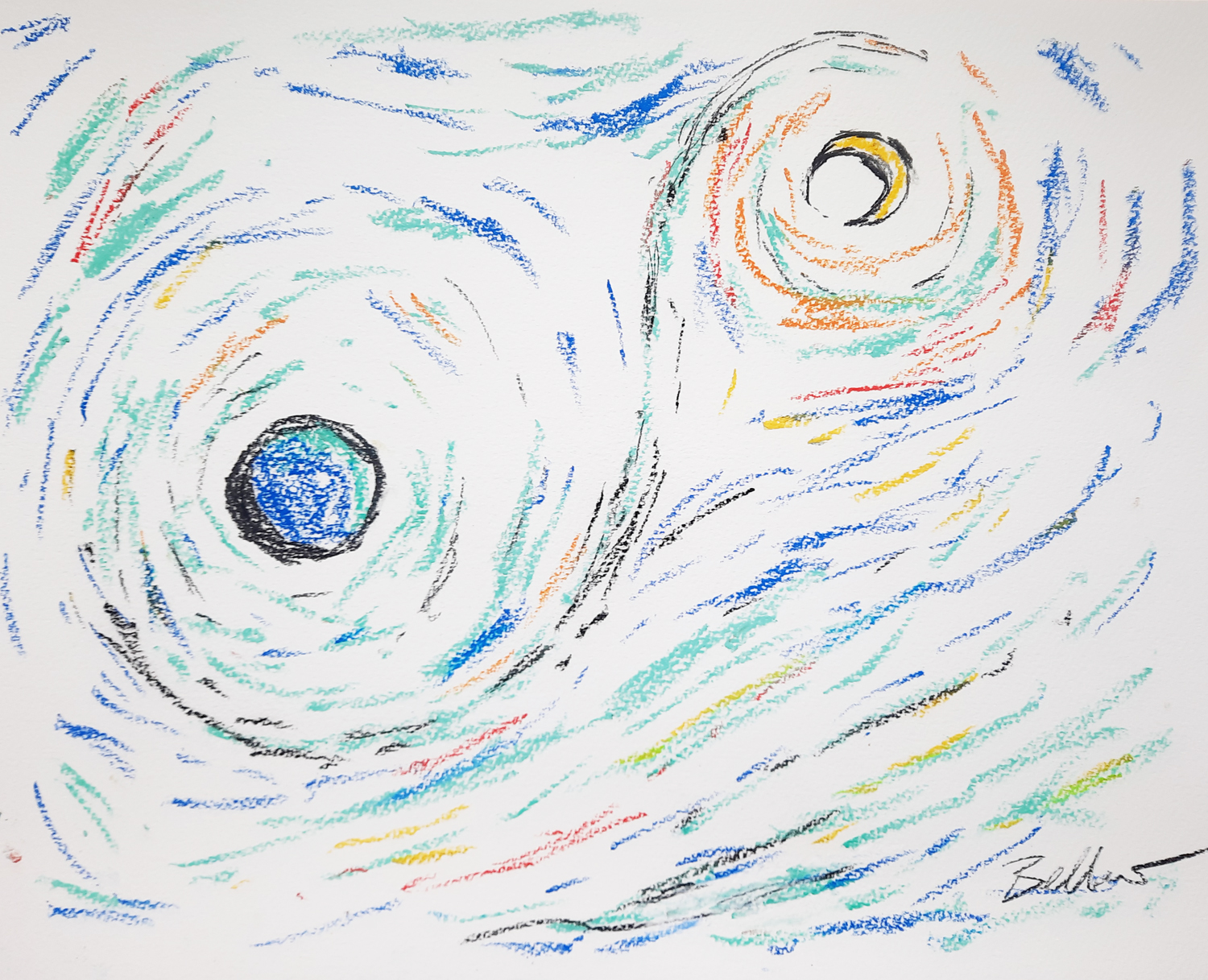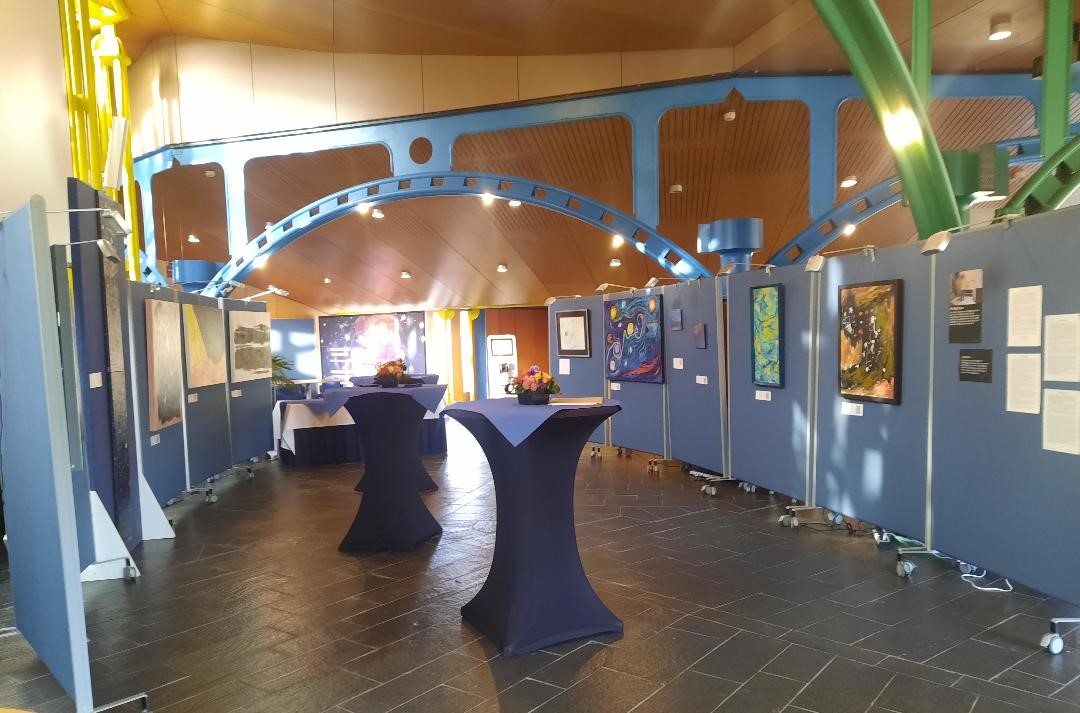For Ed Belbruno the universe around us is more than eye-catching. It’s a medium for infinite fine art, an inspiration for artistic renderings that can break boundaries and be used for spacecraft missions to the moon and beyond.
Belbruno is a visiting research collaborator in the Department of Astrophysical Sciences at Princeton University. Showings of his art are being sponsored by the European Space Agency (ESA) and have been displayed at several ESA installations.
“Art plays a crucial role in inspiring people and explaining our work,” Rolf Densing, ESA Director of Operations and head of the European Space Operations Center (ESOC) in Darmstadt, Germany, told Space.com.
Belbruno is looking forward to returning to ESA’s European Space Research and Technology Center (ESTEC) in Noordwijk, the Netherlands, for the exposition closing on March 28. The art will then be prepared for shipping to the next location, one of the ESA centers near Rome, Madrid or London.
“We are proud to have welcomed many of Ed Belbruno’s works to ESA’s Space Operations Center. His art, which beautifully combines mathematics, physics, stargazing and space exploration, is particularly relevant to us who work in the world of space,” Densing said.
Densing added that ESOC supports initiatives that bridge the gap between art and science, underscoring the long-running Artist in Science Residency program.

Chaos theory
“It is exciting that my pastel painting, ‘Low Fuel Route to the Moon’ (1986), is featured in the exhibition touring ESA,” Belbruno told Space.com. “This is because it actually gave rise to the first transfer to the moon that arrives at the moon in ballistic capture … that is, a spacecraft using this would be automatically captured into lunar orbit without any fuel,” he said.
Prior to his painting, this transfer class, now called ballistic capture transfers, or weak stability boundary (WSB) transfers, did not exist, Belbruno said. “In fact, they are the first-ever designed using chaos theory utilizing the intermingling gravitational fields of the Earth and our moon.”
But how could an artist’s strokes on a canvas ever do this?

Gravitational fields
Belbruno in 1986 was working as a trajectory design engineer at the Jet Propulsion Laboratory in Pasadena, California. He was asked to work on a project called LGAS, standing for lunar get away special. The task was to find a trajectory to the moon for a small spacecraft released from NASA’s space shuttle that used low thrust solar electric propulsion from Xenon ion engines.
Finding that trajectory was incredibly difficult, Belbruno said. “This is because the trajectory would have to carefully weave itself through the intermingling gravitational fields of the Earth and moon, like finding a needle in a haystack. It would involve using chaos theory,” he added.
Belbruno said chaos theory is a very complicated field, so much so that it could take a lifetime to attempt to tackle the problem.
“Also, there were no books on the topic. Feeling the pressure, I used a really unorthodox way to try and find such trajectories,” recalls Belbruno.
“Since I am also an artist, I figured that if I did a painting of the Earth-moon system as fast as I could, then I wouldn’t be actively thinking. My subconscious might help me out and perhaps reveal such a trajectory in the brush strokes,” said Belbruno. “It was a long shot, but I had nothing to lose to try it.”
With pastel paper and chalk pastels, Belbruno did a quick painting of the Earth-moon system, using different colors.
“I noticed that the brush strokes made regions about the Earth and also about the moon,” Belbruno said, “and I saw some dark brush strokes going from the Earth region to the one about the moon. Could these give me the transfer I hoped for?”
Belbruno said he guesstimated the initial velocity and position a trajectory would have from the brush strokes near the Earth.
“I put them in a JPL trajectory simulation program and let the program numerically simulate the trajectory this initial condition would yield,” said Belbruno. “To my incredible surprise and shock, it went to the moon and into lunar orbit automatically! This was the first ballistic capture transfer ever found.”
In fact, the regions about the Earth and moon revealed where such trajectories existed, Belbruno added, and are now referred to as weak stability boundary regions.
Pastel payoff
The pastel payoff was finding a precise numerical algorithm to generate these trajectories for the LGAS project. However, the resulting transfer to the moon took two years to get there in the simulation.
Although NASA felt this was too long to be useful, Belbruno points out that this design was utilized for the first of ESA’s Small Missions for Advanced Research in Technology (SMART-1) lunar mission. Launched in 2003, SMART-1 used solar-electric propulsion and was outfitted with several miniaturized instruments.
Belbruno did three versions of his pastel artwork at the time, and the main one is in the ESA exhibition, donated by the artist to ESOC.
“This may be the first time a painting was directly used to make a mathematical/scientific discovery,” Belbruno said.
“ESA appreciates my artwork since it shows how art can directly influence science and math. They show the expanse of nature and space itself from someone in both the sciences, mathematics and the arts as a painter.”

Unique perspective
Indeed, ballistic capture transfers are now used in many lunar missions, Belbruno said, with the first being Japan’s Hiten mission in 1991 that conducted up to 10 lunar swing-by experiments, entering lunar orbit in February 1992.
“By the way, I never told JPL at the time I used a painting to initially find this trajectory,” said Belbruno.
Other works by astrophysicist/artist include “Microwave Energy of the Universe” – an actual painting of the microwave background radiation of the big bang based on images produced by NASA’s Wilkinson Microwave Anisotropy Probe (WMAP) and ESA’s Planck space-based observatory missions.
“These paintings and the others give impressions of our universe that science cannot give, and offer a unique perspective,” said Belbruno.
For more information on “surfing the gravitational field,” and low-fuel space travel, check out Belbruno’s book, “Fly Me to the Moon: An Insider’s Guide to the New Science of Space Travel” (2007) by Princeton University Press.

